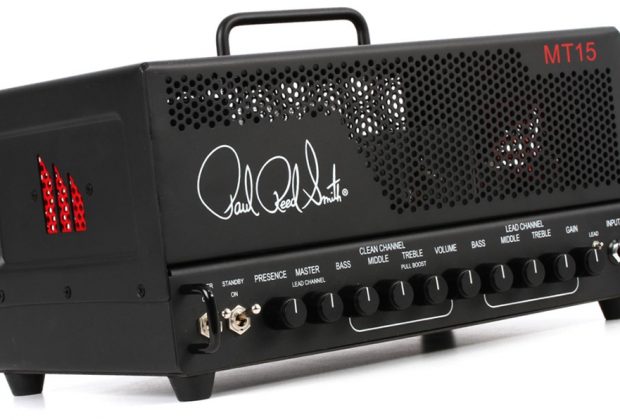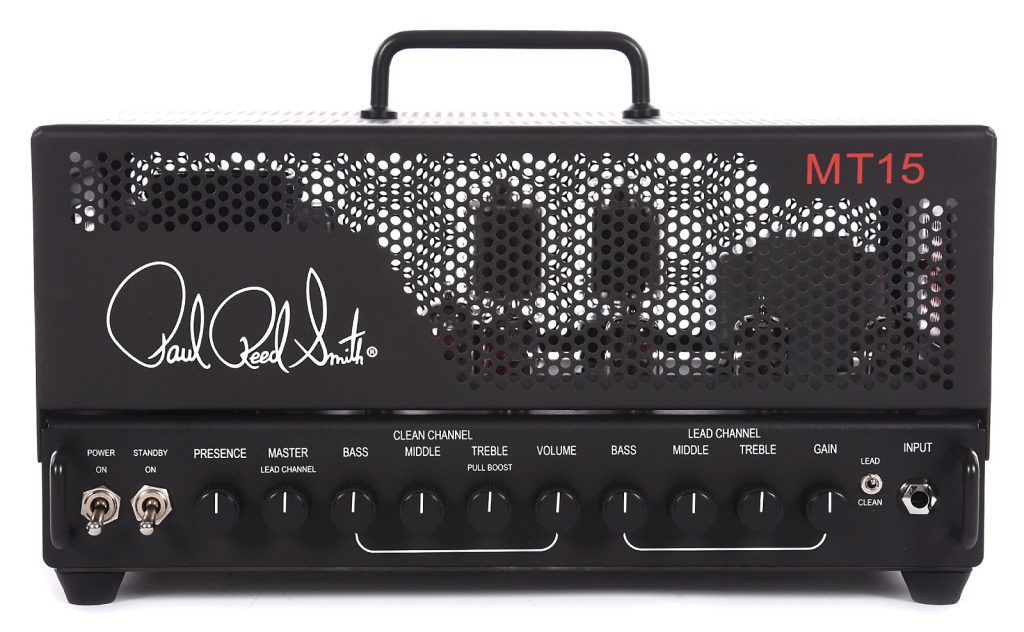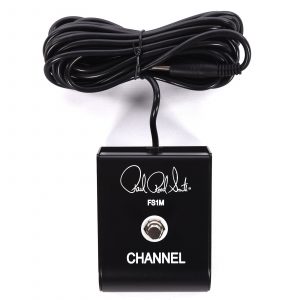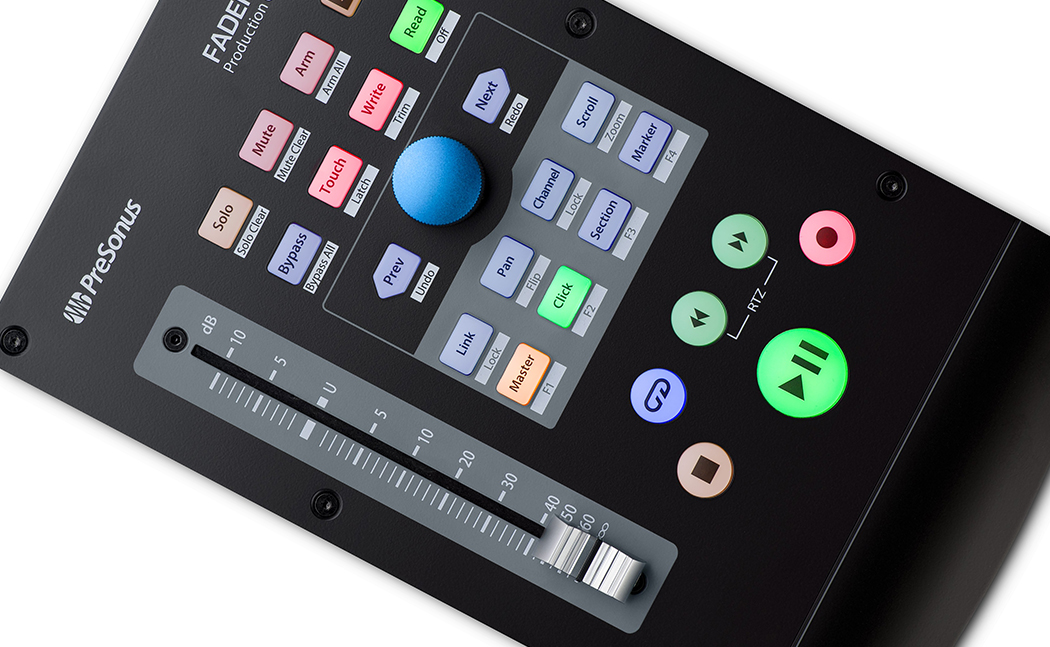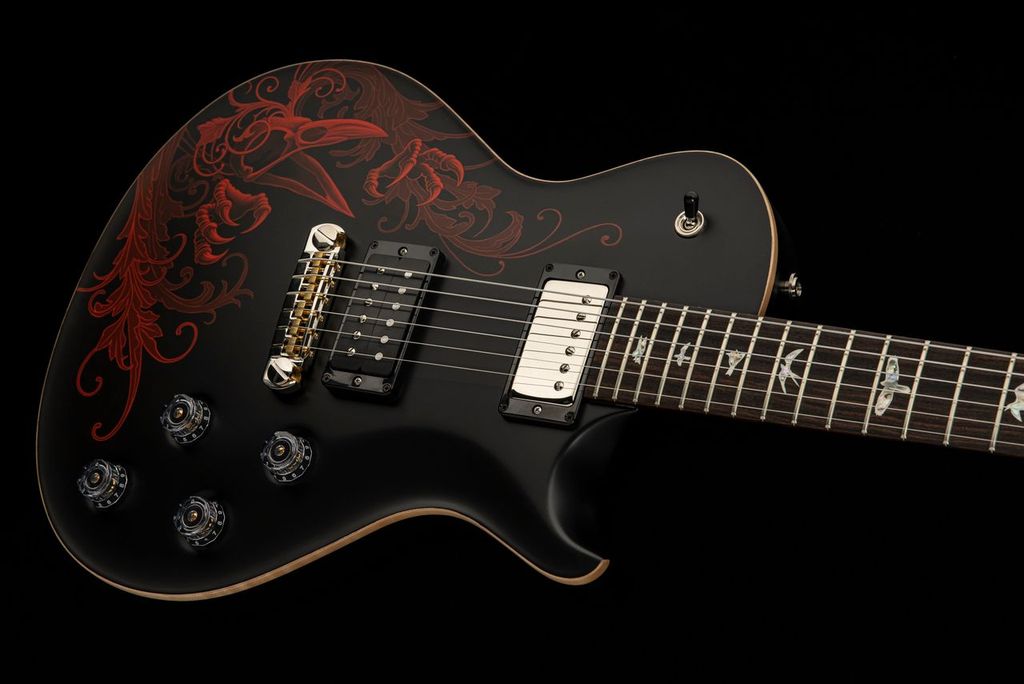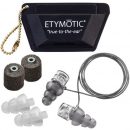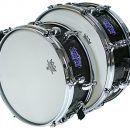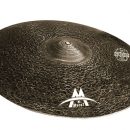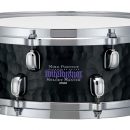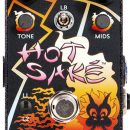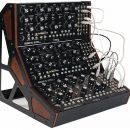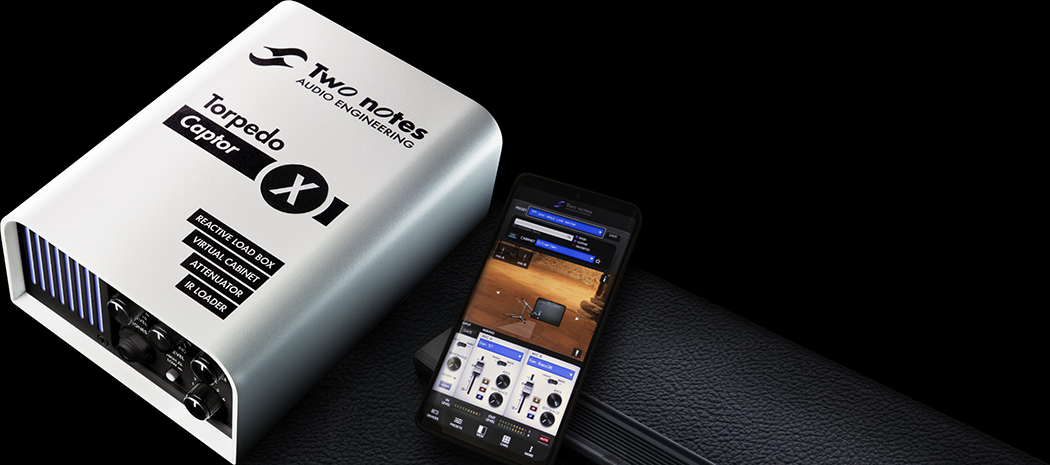Mark Tremonti is a self-proclaimed amp fanatic, and Paul Reed Smith is a well-known quality fanatic. Seems like a pairing made in heaven for creating a signature amp for the masses.
Mark Tremonti’s signature PRS guitars have been around for almost 20 years and have always been highly regarded, so it comes as no surprise that the collaborative efforts of Mark and Paul would result in a high quality amp, and in this case, the results are impressive—and available at an accessible price point.
We took the lunchbox-sized amp for a spin along with its matching 1x12 cabinet, and think this delivers a great sounding and versatile setup.
Features
Key features of the MT15 include: two channels (clean and lead, with a pull boost for the clean channel), 6L6 power (two 6L6GCMS power tubes) and six JJ EC83S preamp tubes, 15 Watts, switchable to 7 watts.
Front panel controls for the clean channel include volume, treble (with pull boost), middle, and bass while the controls for the lead channel include gain, master, treble, middle, bass. When the clean channel is on, the amp lights up in a bright blue color. Switch to the lead channel and the amp lights up bright red, so you always know what channel you are using at a glance, not to mention the cool color factor. There is also a presence control that works on both channels.
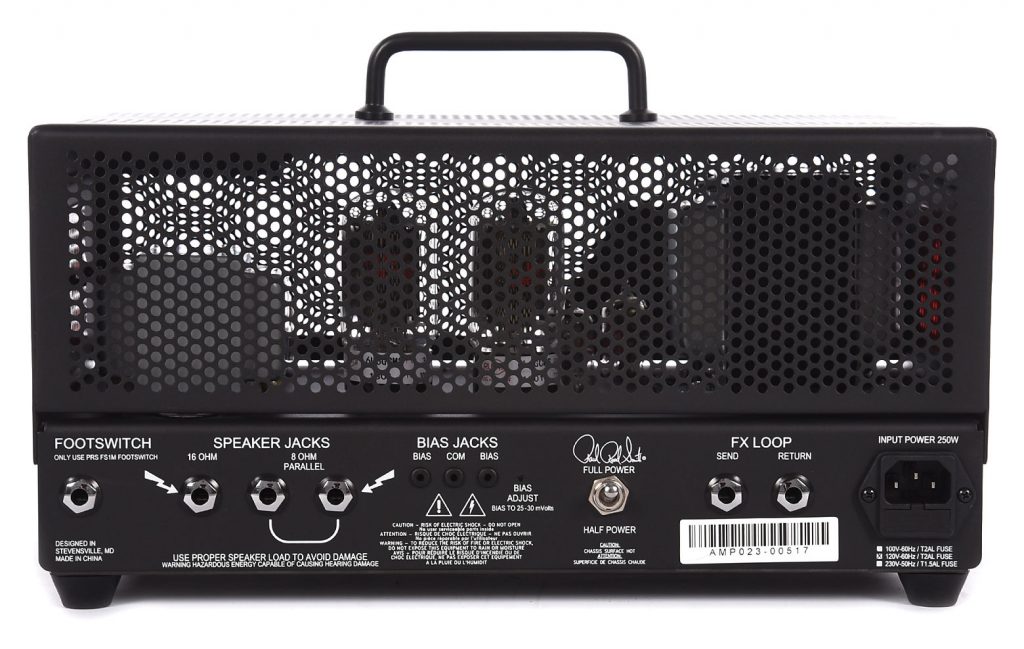 Additional features include a series effects loop and tube bias adjustment jacks accessible from the back, as well as a half power switch. Also included is a single-button footswitch for switching channels.
Additional features include a series effects loop and tube bias adjustment jacks accessible from the back, as well as a half power switch. Also included is a single-button footswitch for switching channels.
The amp head is 14”x8”x7.25" high and weighs 17.8 lbs. A dust cover is also included.
The closed back, matching cab is rated for 60 Watts and equipped with a 1x12” Celestion Vintage 30 speaker with 16 ohm impedance. Inputs include one ¼” mono. The cabinet is made of birch plywood and measures 18”x24”x10.5” high. The cabinet is dressed in black grill cloth and black piping.
Usability
The front panel of the amp head was mostly straightforward, with clean labeling of all controls, although the Master (Lead Channel) control is misleading in that it is not actually a master volume control for the amp—it is the volume control for the Lead channel. The two channels are fully independent, and the lead channel’s volume control has been relocated to the left side of the amp rather than being located to the right of that channel’s tone controls (like the Clean channel).
Switching from the clean to the lead channel was easily selectable by toggle switch from the front of the amp (useful when working by yourself in the studio) or via the supplied footswitch, which has a nice long cord (but sadly is hard-wired to the box). The boost on the clean channel, however, was only accessible by pulling the knob on the front of the amp, a disappointing design limitation given how useful and sweet sounding this feature was.
All tone controls were useful throughout their sweep and really allowed sculpting of the sound and EQing for the playing situation and the guitar used. The presence control added a subtle change to the tone that could be used on both channels.
Don’t be fooled by the allure of a half power switch, as that does not equate to “half as loud,” which would require dropping the power closer to 1.5 Watts. This little amp is still mighty loud when halved. However, this useful feature did bring the volume down a bit for more intimate settings, and of course, it impacted the playing dynamics by allowing for a bit more natural compression.
Sound
From pristine clean to high gain overdrive, the PRS MT15 amp pretty much covered the bases. The amp has four basic tonal capabilities: clean, crunch, clean high gain, and saturated high gain. The clean channel is very clean and pedal friendly. As Mark states in his product video, Fender Twins were his amp of choice growing up and those were the tones he was shooting for in developing the clean channel of this amp. With just a little delay or reverb, it produces a nice crisp clean tone that is never muddy nor overly bright or harsh. It sounds a little glassy on single coil pickups and nice and clear on humbuckers. Rather than just cranking the clean channel to get some bite, there is a boost that takes the channel into a mild overdrive when turned up. However, adding a boost pedal in front of the amp helped control pushing the tubes into a little crunch at the desired volume.
Playing first with different dual humbucker equipped guitars we tested out the clean channel and we were not disappointed. Notes were very clean and articulate at all volumes. We were able to dial in the tones we were seeking easily. Increasing the bass EQ added fullness without muddiness. And turning the treble all the way up made for snappy country tones. With humbuckers we were able to dive the clean channel at higher volumes, but pulling the boost allowed us to tame the crunch with the overall volume.
Testing the lead channel, we had to make sure we didn’t blow out any windows. Even with the gain set low, this was still a high powered lead channel! Increasing the gain increased the fullness of the tone to a thick saturation which never got muddy. Regardless of the clean or lead channel, we were impressed that all the tone controls were useful throughout their sweep.
Next it was time to test out a Strat- and a Tele-style guitar. Single coil tones were glistening clean with a nice glassiness. Driving the clean required the clean channel to be almost fully cranked when paired with lower output pickups. A little boost on the front end really drove the clean channel into a good crunch sound. Switching to the lead channel made it clear that single coil guitars can indeed sound great driving a high-gain amp… when it’s the right amp.
Finally, we tested guitars with P90s and lipstick pickups, and again we were very impressed by the range of useful and musical tones.
Check out the amp as demo’ed by Mark Tremonti himself:
Documentation and Product Support
There is a simple manual that is included with the amp, and additional information can be found on the PRS website’s product page. However, it appears their product support section does not contain any information regarding the MT15.
Price
The PRS MT15 Amp head sells for $649, and the matching cabinet sells for $389. The amp and cabinet are designed in the USA and manufactured in China. We feel this is a very good price for such a premium sounding amplifier, if its feature set also meets your requirements.
Contact Information
Paul Reed Smith Guitars
www.prsguitars.com

